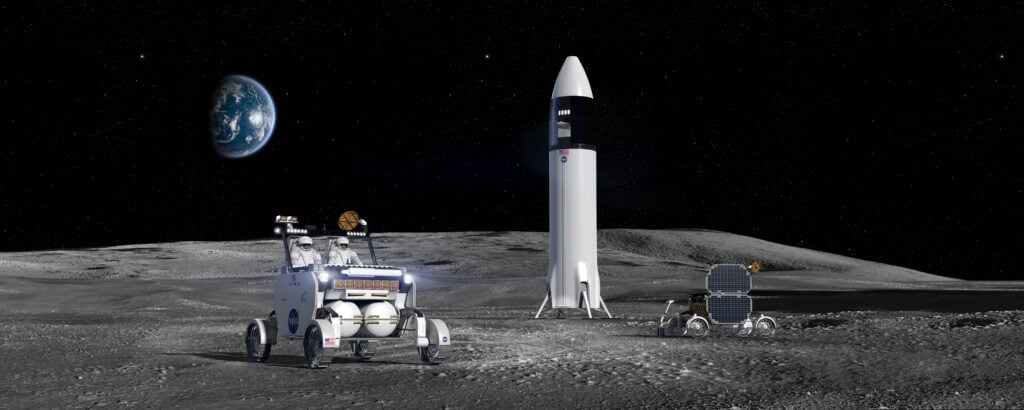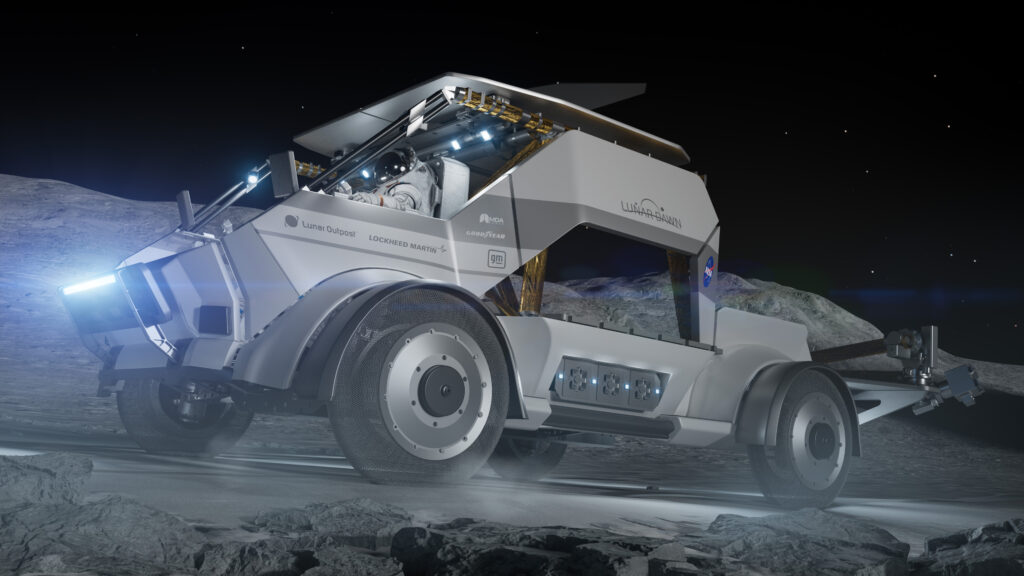NASA’s ambitious Artemis program aims to return humans to the Moon. As part of that mission, the US space agency has selected three companies to advance the development of the Lunar Terrain Vehicle (LTV), a crucial component for expanding scientific exploration on the lunar surface.
Intuitive Machines, Lunar Outpost, and Venturi Astrolab have been tasked with creating autonomous rovers that will transport astronauts and equipment during future Artemis missions, with the LTV set to debut during the Artemis V mission.

The Artemis program, which seeks to establish a sustainable human presence on the Moon and lay the foundation for crewed missions to Mars, requires advanced mobility solutions to enable astronauts to traverse the challenging lunar terrain.
NASA’s selection of these three companies was the first significant milestone in the development of the LTV, with a combined maximum potential contract value of $4.6 billion.
LTV Requirements and Capabilities
To meet NASA’s requirements, the LTV must be designed to withstand the harsh conditions on the Moon’s surface, including extreme temperatures ranging from 138 to -173 degrees Celsius. The vehicle must also be capable of carrying a crew of two astronauts in their spacesuits and up to 500 kg (1,100 pounds) of cargo.
The LTV will be electrically powered and feature two equipment racks at each end of the vehicle to accommodate scientific instruments and other payloads. Headlights illuminate the terrain during lunar nights and in permanently shadowed regions, ensuring safe navigation.
 Lunar Dawn’s concept illustration of a NASA Lunar Terrain Vehicle (LTV) rover for Artemis.
Lunar Dawn’s concept illustration of a NASA Lunar Terrain Vehicle (LTV) rover for Artemis.
In addition to these basic requirements, the LTV will be equipped with advanced navigation and communication systems and autonomous driving capabilities.
These features will allow the rover to operate independently when astronauts are not on the lunar surface, supporting remote scientific missions between Artemis flights.
While the LTV shares some similarities with the Lunar Roving Vehicle (LRV) used during the Apollo missions, it represents a significant advancement in capabilities and technology. The LRV, built by Boeing, was designed to transport astronauts a maximum distance of 4.7 miles (7.6 km) from the landing site. In contrast, the LTV will enable much longer traverses, greatly expanding the range of scientific exploration on the Moon.

With the selection of Intuitive Machines, Lunar Outpost, and Venturi Astrolab, the LTV development process enters a crucial phase. Each company will begin with a one-year feasibility study to refine its designs and ensure compliance with NASA’s requirements. Following this initial phase, the agency will issue a subsequent request for a demonstration mission, with the expectation that only one provider will be selected to deliver and validate their LTV on the lunar surface.
Implications and Future Use
The development of the LTV holds significant implications for the future of lunar exploration and scientific discovery. By enabling astronauts to travel greater distances and access previously unexplored regions of the Moon, the LTV should increase the scientific return of Artemis missions.

The rover’s autonomous capabilities will allow for remote scientific operations even when crews are not present on the surface.
Beyond NASA’s missions, the selected LTV provider will be able to use their vehicle for commercial lunar surface activities, opening up new possibilities for private sector involvement in space exploration.
TLDR:
- NASA selects Intuitive Machines, Lunar Outpost, and Venturi Astrolab to develop the Lunar Terrain Vehicle (LTV) for Artemis moon missions
- LTV to debut during Artemis V, enabling extended lunar exploration and scientific discovery
- The vehicle must withstand harsh lunar conditions, carry crew and cargo, and have autonomous capabilities.
- One-year feasibility study followed by down-selection to one provider for demonstration mission
- LTV development is crucial for establishing a sustainable human presence on the Moon and future Mars missions







